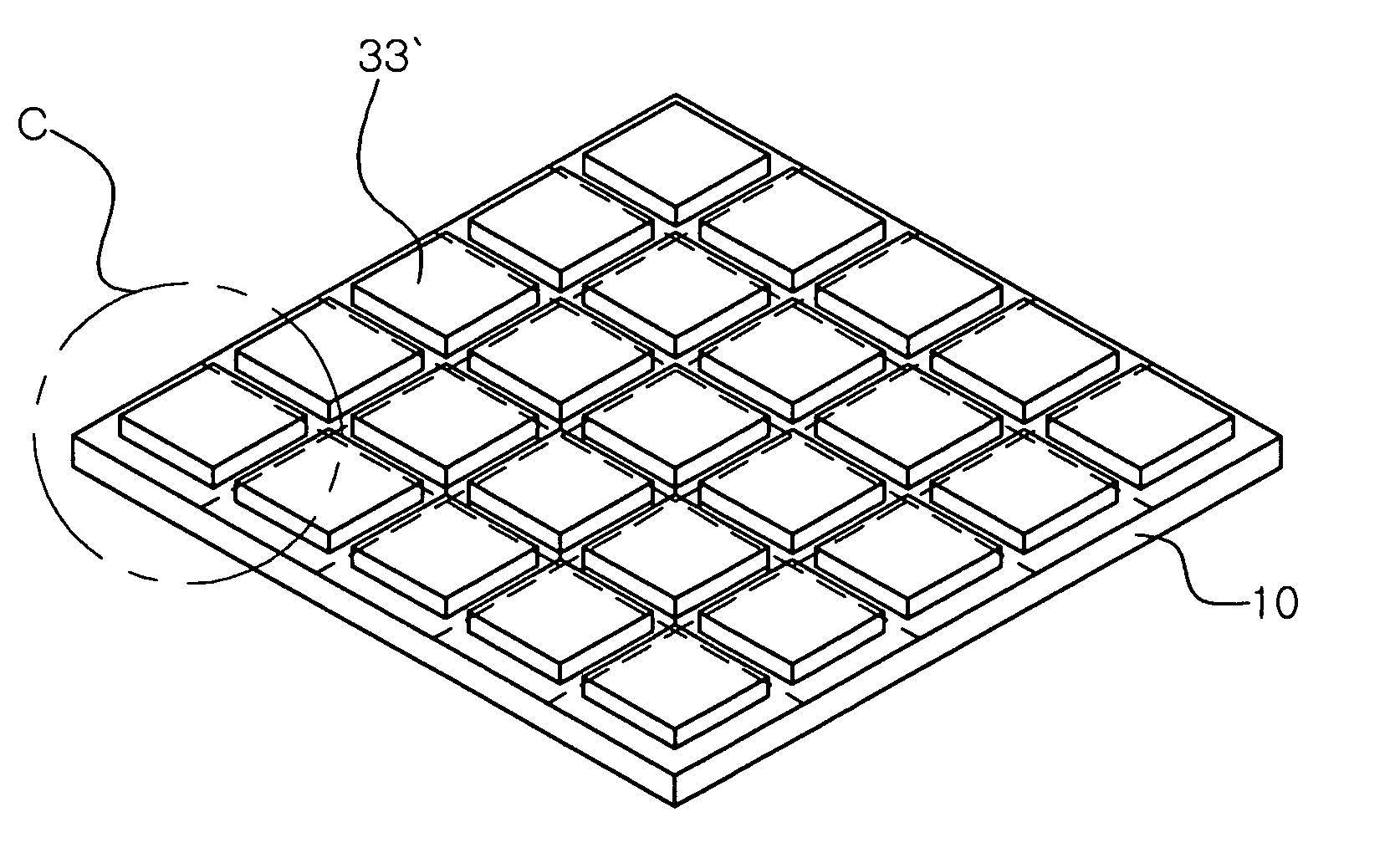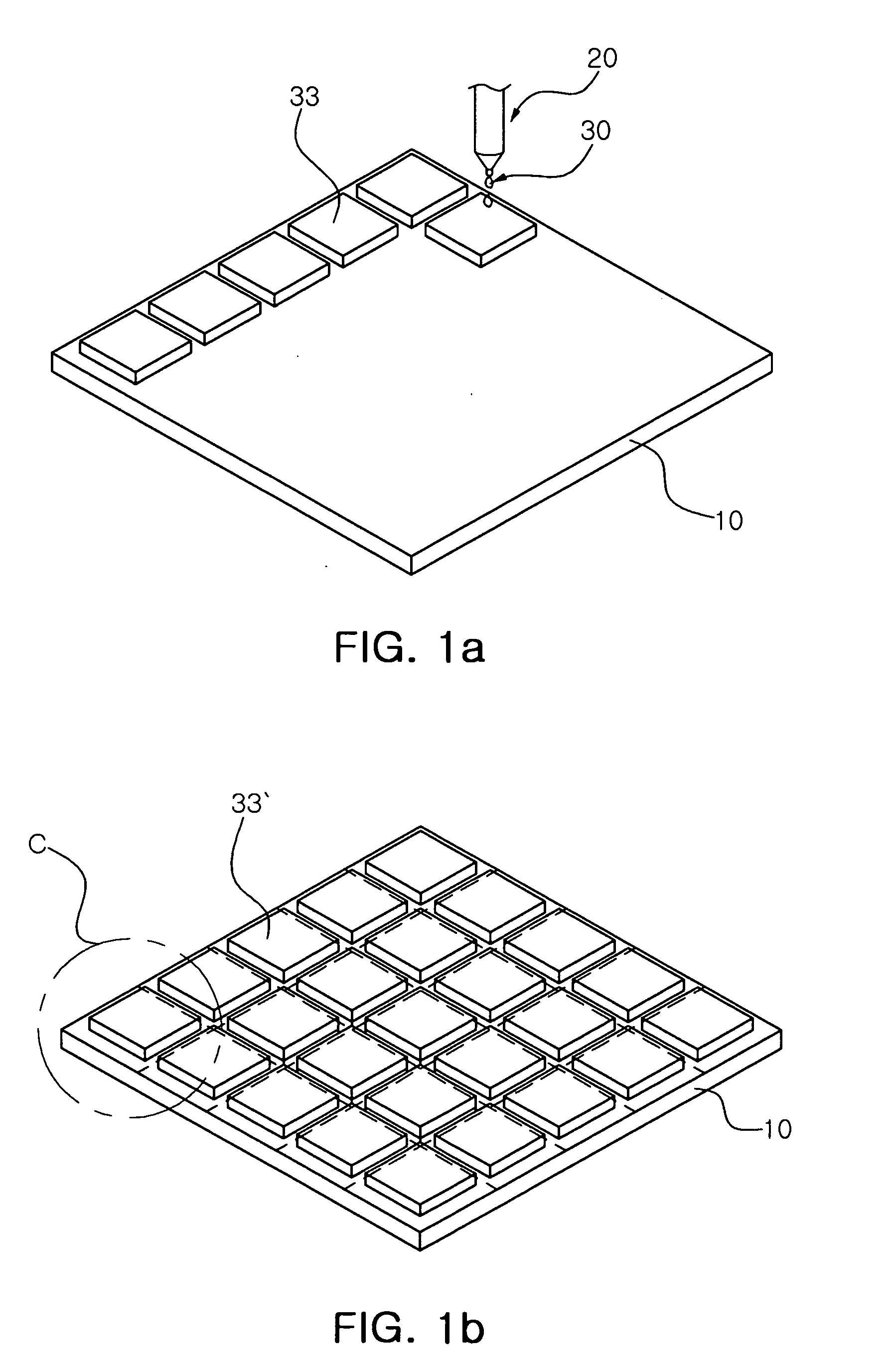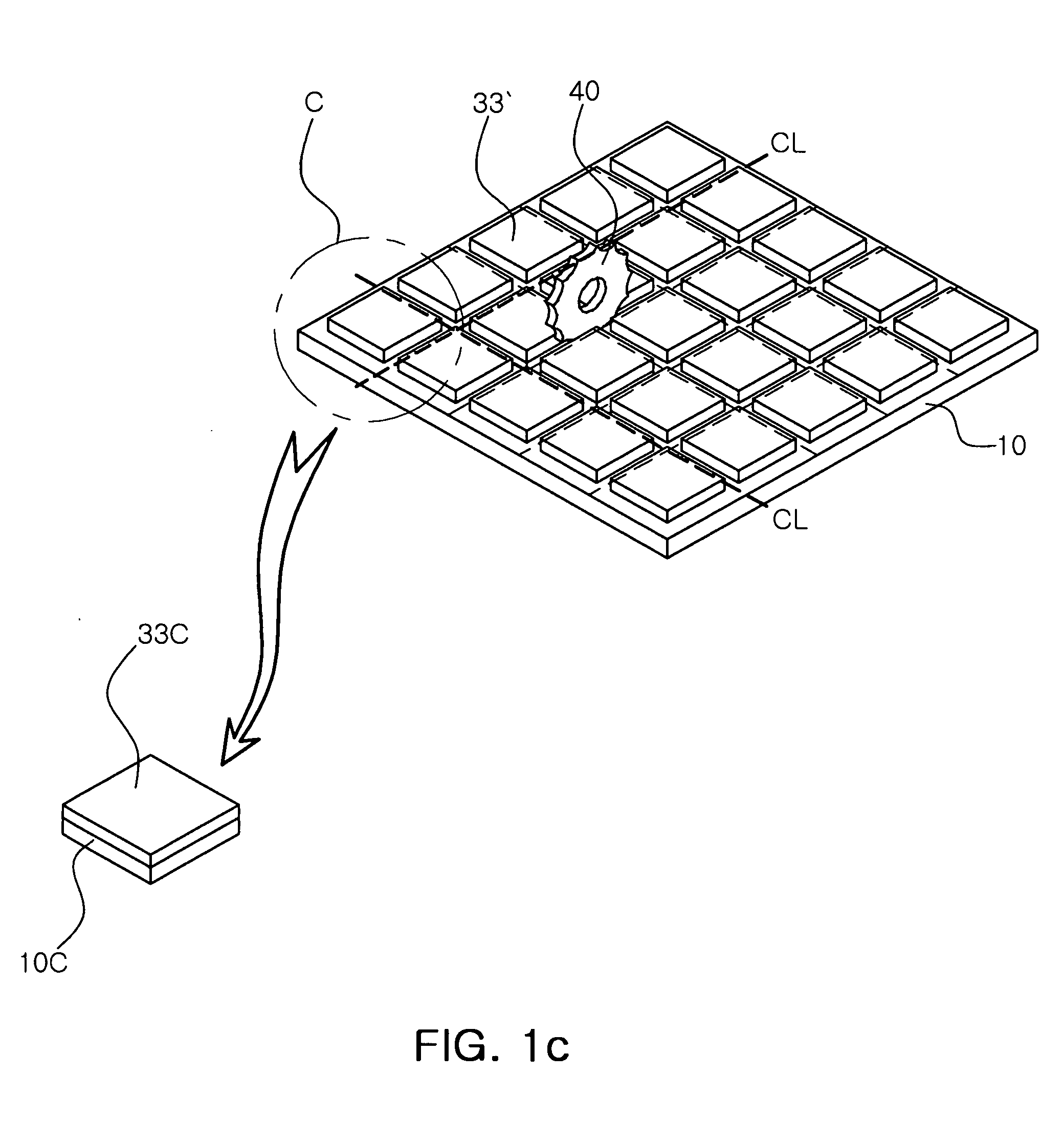Method for forming transparent organic electrode
a technology of organic electrodes and transparent electrodes, which is applied in the direction of organic semiconductor devices, coatings, semiconductor devices, etc., can solve the problems of high processing costs, low manufacturing yield of transparent electrodes, and crack generation on the sections of transparent electrodes, so as to achieve good transparency, reduce the effect of consuming less raw materials and low defect ra
- Summary
- Abstract
- Description
- Claims
- Application Information
AI Technical Summary
Benefits of technology
Problems solved by technology
Method used
Image
Examples
embodiment 1
[0074]In order to check for variations in resistance according to the temperature for thermally treating the organic conductive composition, the organic conductive composition was printed for 30 minutes by using inkjet printing, screen printing, Gravure printing, or offset printing, and then the resistance values according to the respective temperatures of thermal treatments were compared.
[0075]FIG. 3a is a graph of variations of resistance values over temperature of thermal treatment based on various printing methods.
[0076]It is noted that when the organic conductive composition was printed through various printing methods and then thermally heated within the temperature range from 25° C. to 150° C., the resistance of unit cells including the organic conductive composition was not greatly increased, while the resistance was sharply increased as the temperature went beyond 150° C.
[0077]Namely, it is noted that, according to an exemplary embodiment of the present invention, when the ...
embodiment 2
[0078]In order to check crack generation rates according to the temperatures of thermal treatment of the organic conductive composition, the organic conductive composition was printed by using inkjet printing, screen printing, Gravure printing, or offset printing, and then the crack generation rates according to the respective temperatures of thermal treatments were compared.
[0079]In the case that the crack generation rate (A) is based on the ratio of the length of a crack per unit length when the crack is generated in a unit area, the more cracks that are generated, the larger the crack generation rate value.
[0080]Crack generation rate=length of crack / unit length.
[0081]With reference to FIG. 3b, When the cutting lines were formed to demarcate the cells according to an exemplary embodiment of the present invention and conductive patterns within the cells demarcated by the cutting lines were thermally treated, a crack generation rate did not exceed 0.5 although any printing method wa...
PUM
| Property | Measurement | Unit |
|---|---|---|
| temperature | aaaaa | aaaaa |
| temperature | aaaaa | aaaaa |
| temperature | aaaaa | aaaaa |
Abstract
Description
Claims
Application Information
 Login to View More
Login to View More - R&D
- Intellectual Property
- Life Sciences
- Materials
- Tech Scout
- Unparalleled Data Quality
- Higher Quality Content
- 60% Fewer Hallucinations
Browse by: Latest US Patents, China's latest patents, Technical Efficacy Thesaurus, Application Domain, Technology Topic, Popular Technical Reports.
© 2025 PatSnap. All rights reserved.Legal|Privacy policy|Modern Slavery Act Transparency Statement|Sitemap|About US| Contact US: help@patsnap.com



